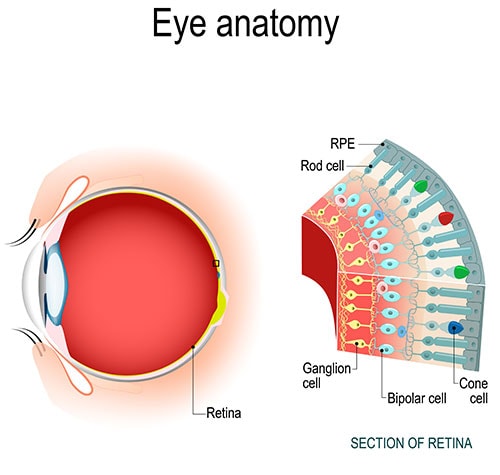All Categories
Featured
With the raising use of technology, direct exposure to ecological factors, and the all-natural aging procedure, taking proactive steps to secure your eyes is crucial. In this blog, we'll discuss some of the most common eye problems and sensible ideas on just how to avoid them, guaranteeing you maintain ideal vision throughout your life.

- Myopia (Near-Sightedness):
Nearsightedness, or near-sightedness, is a condition where distant items show up fuzzy while nearby things remain clear. It takes place when the eye is as well long, or the cornea is too bent, creating light to concentrate in front of the retina. Nearsightedness prevails in youngsters and young people, and its occurrence has increased due to boosted screen time.
Prevention:
Limitation display time and encourage normal breaks to stay clear of eye stress. Advertise outside activities, as studies suggest that hanging out outdoors can decrease the threat of myopia growth in children. If you are diagnosed with myopia, using corrective lenses such as glasses or contact lenses can help manage the condition. 2. Hyperopia (Far-Sightedness):
Hyperopia, or far-sightedness, is the opposite of nearsightedness. It happens when far-off objects are seen plainly, but close objects show up blurry. Hyperopia happens when the eye is as well short or the cornea is also flat, triggering light to focus behind the retina.
Avoidance:
Regular eye tests can aid discover hyperopia early. Comparable to myopia, corrective lenses (glasses or calls) are typically prescribed to correct the vision. Practicing excellent aesthetic behaviors, such as avoiding excessive close-up benefit lengthy periods, can also assist alleviate signs and symptoms. 3. Age-Related Macular Deterioration (AMD):
AMD is a problem that impacts the macula, the part of the retina responsible for sharp main vision. This age-related illness causes blurred or shed vision in the facility of the aesthetic field, which can make jobs like reading or identifying faces difficult. While the precise reason for AMD isn't completely understood, it's linked to aging, genes, and environmental factors.
Prevention:
Protect your eyes from UV rays by wearing sunglasses that block 100% of UVA and UVB rays. Consume a diet plan abundant in antioxidants, particularly those located in leafed environment-friendlies, fish, and nuts, to sustain retinal health and wellness. Do not smoke, as cigarette smoking is a substantial risk element for AMD. 4. Cataracts:
Cataracts create when the lens of the eye becomes gloomy, impairing vision. This problem is most generally related to aging yet can also result from extreme UV exposure, cigarette smoking, or particular clinical conditions such as diabetic issues.
Prevention:
Put on sunglasses with UV security to lower UV exposure, which is a leading source of cataracts. Prevent smoking, as it accelerates cataract formation. Keep a healthy and balanced diet regimen high in vitamins C and E, which have been revealed to support eye health and avoid cataracts. If you have diabetes mellitus, it's crucial to manage your blood glucose levels to lower your danger. 5. Glaucoma:
Glaucoma describes a group of eye conditions that damage the optic nerve, usually as a result of high intraocular stress. It can create gradual vision loss and, if left neglected, result in blindness. Glaucoma is often called the "quiet burglar of view" due to the fact that it normally develops without recognizable signs and symptoms up until significant damages has actually happened.
Prevention:
Get regular eye examinations, particularly if you have a family members background of glaucoma, as it is genetic. Workout regularly to aid improve blood flow and maintain healthy eye stress. If identified with glaucoma, complying with prescribed treatments and drugs is vital to handle the condition and prevent additional damages. 6. Dry Eyes:
Dry eye syndrome occurs when your eyes don't generate enough tears, or the tears generated are mediocre. This can cause irritation, inflammation, burning, and a sandy sensation in the eyes. Ecological aspects, display time, and certain medications can worsen dry eyes.
Prevention:
Blink much more often when utilizing digital devices to maintain your eyes moist. Use synthetic rips or lubricating eye drops to keep your eyes moistened. Enhance the humidity in dry atmospheres using a humidifier. Consume alcohol lots of water to remain moisturized and assistance tear manufacturing. 7. Conjunctivitis (Pink Eye):
Conjunctivitis, or pink eye, is an inflammation of the thin cells covering the white part of the eye. It can be caused by microbial or viral infections, allergic reactions, or irritants. Although it is usually contagious, conjunctivitis is typically a mild problem that solves with appropriate care.
Prevention:
Laundry your hands regularly and avoid touching your eyes. Do not share individual products such as towels, cushions, or make-up. If you wear call lenses, make sure to comply with appropriate hygiene and cleansing methods. Conclusion:
Taking aggressive actions to protect your eyes is vital in protecting against typical eye conditions and keeping healthy vision. Routine eye tests, a healthy and balanced way of life, and exercising great behaviors like appropriate display usage and UV security can all assist maintain your eyes in top form. By recognizing possible dangers and doing something about it currently, you can ensure that your vision remains clear and your eyes remain healthy and balanced for several years to come. Do not wait on eye issues to happen-- care for your eyes today!
Latest Posts
Discover WyHy Federal Credit Union – Exclusive Benefits for Your Financial Success
Why Routine Vehicle Maintenance at Montclare Auto Repair Keeps Your Wallet Happy
Seamless Aluminum Rain Gutters: The Smart Selection for Your Home
More
Latest Posts
Discover WyHy Federal Credit Union – Exclusive Benefits for Your Financial Success
Why Routine Vehicle Maintenance at Montclare Auto Repair Keeps Your Wallet Happy
Seamless Aluminum Rain Gutters: The Smart Selection for Your Home